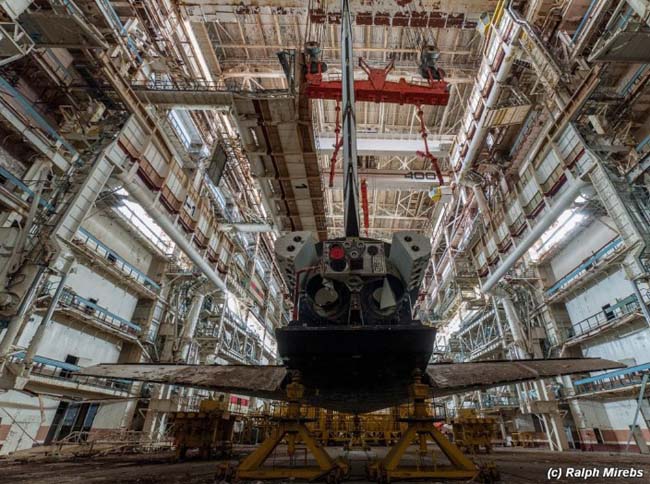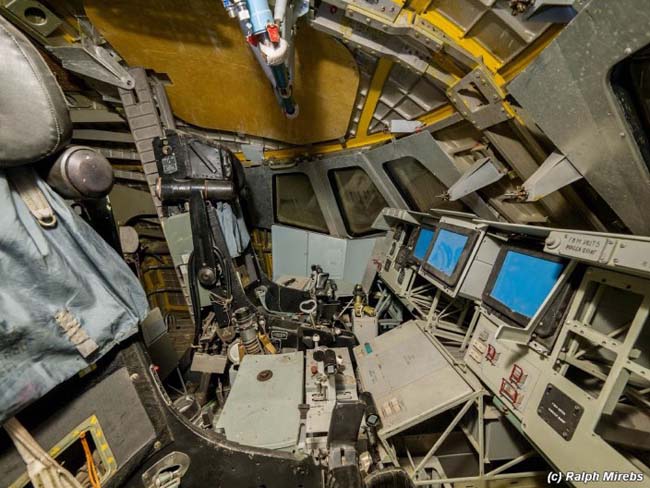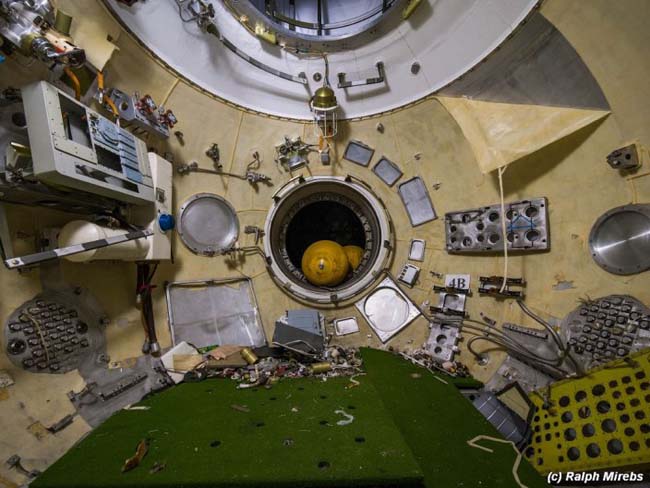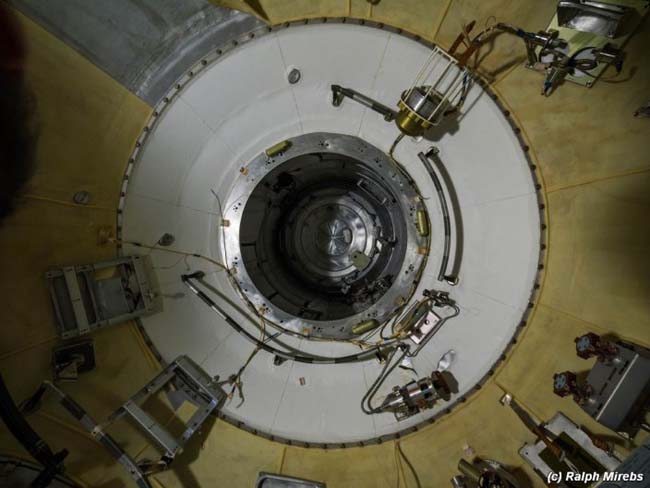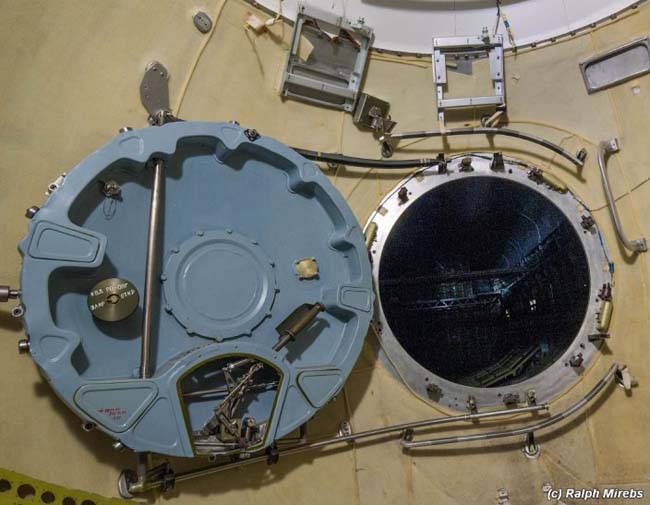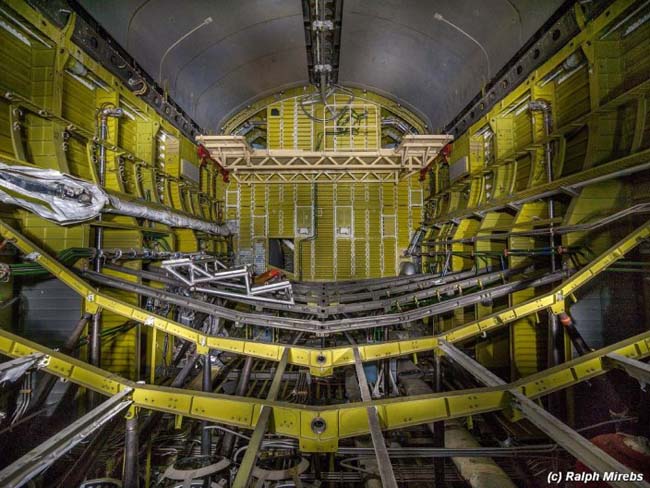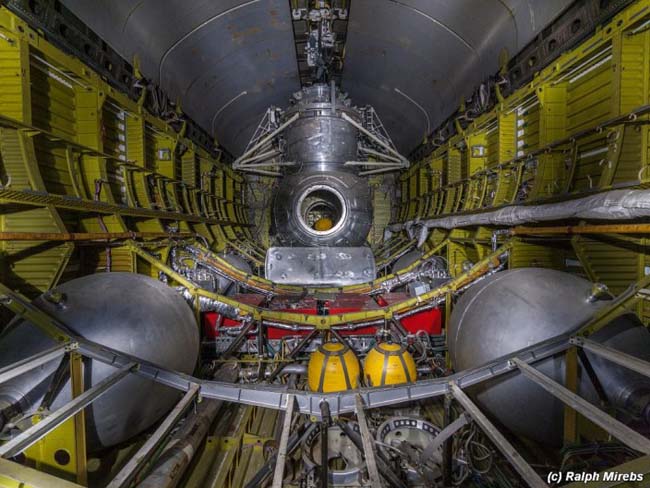From a Western lexical standpoint, Hinduism like other faiths is appropriately referred to as a religion. In India the term dharma is preferred, which is broader than the western term "religion". Hindu traditionalists prefer to call it Sanatana Dharma (the eternal or ancient dharma).
Millenia ago, seers in the ancient
Eastern tradition articulated the blueprint for the fulfillment of the
objectives of human birth as was shown to them in the highest supreme levels of
consciousness. The Supreme Self pervades and exists in all dimensions in all
beings, sentient and insentient. It is that Supreme Self that exists inside
each individual self, in each individual person. And therefore every individual
person is none other than the Supreme Self, for how can the part be different
from the whole.
In order for an individual to realize their supreme Self, they need to
identify the reasons and objectives why they came into being on this earth
plane, and fulfill them. The ancient seers clearly articulated the objectives
of humankind as "Purusharthas" -- 'Purusha' means an individual or
person, and 'Artha' means meaning or objective or pursuit. They articulated
four Purusharthas as:
Dharma : Righteousness, Duty
Artha : Wealth
Kama : Desire
Moksha : Liberation
The four purusharthas are really the objectives of God, of the Supreme Self,
the qualities of God. And since an individual person is a reflection of God, is
a part of God, it is the rightful pursuit of a person to fulfill these four
purusharthas. In fact, it is both your individual and soul purpose.
An individual can realize him or
herself by balancing and fulfilling these four objectives. These four
objectives are not independent of each other and should not be viewed in a
stand-alone manner. They define and refine the other objectives and allow the
other objectives to define and refine itself. The activity of fulfilling one
objective should also support the fulfillment of the other objectives. By
maintaining a balance between the definition and fulfillment of the four
purusharthas, a symbiotic evolution of the individual self takes place.
Exclusive pursuit of one purushartha creates an imbalance in a person's life,
and prevents the person from reaching the ultimate destination of their life.
As a person progresses through the evolution of their soul, they find that some
of the objectives eventually lose their place and importance to more
predominant objectives. For example, the desire to earn wealth may diminish and
disappear, or a person may come to the realization that there are no more
material desires that they need to pursue, and hence more room is created for
the pursuit of the ultimate objective, Moksha.
Ekatvam is founded on the four pillars of Dharma, Artha, Kama, Moksha.
The mission of Ekatvam is to help people
realize their True Selves, to become one with the Supreme Self in this
lifetime, to achieve moksha. Often, people make the mistake of renouncing
everything in the pursuit of Moksha, but that can frequently turn out to be the
wrong path, and is not suited for everyone. Ekatvam is in place to help people
identify their true purpose and their unique purusharthas. Ekatvam shows
the way to each individual by helping people see the underlying unity, Ekatvam (oneness), of themselves with the Universe.
The path for each individual to reach the ultimate destination is different,
and it is only the individual self that can identify and see the path with the
help of the Divine guidance.
Dharma: A person is born on this earth to
perform certain duties. The soul houses itself into the physical vehicle that
is the body which most suits for performing these duties. The physical work
that a person needs to do, the duties of the person on this earth plane are
termed as the Dharma of the person. Dharma is a difficult term to translate
into English, but can roughly be translated as the rightful duty of a person.
This is the true calling of a person, what they are born to do. Examples of a
person's dharma are to be a doctor, teacher, writer, warrior, priest, parent
etc. Sometimes a person's dharma is decided by their birth, but not necessarily
so. A person's dharma can be a combination of things, and as a person
progresses through life, different stages of life may call for different
dharmas and purposes. Tuning into the inner guide of the heart allows a person
to identify their dharma, their true calling.
Artha: Artha is the pursuit of material
wealth, which brings material comforts to a person. People sometimes believe
that the path of spiritual growth and pursuit of material wealth are mutually
exclusive, or even that a spiritual seeker needs to be in poverty. But that is
not true. If we look at the Universe, it is a reflection of abundance. Nature
is abundant in everything, poverty is nothing but a state of consciousness. If
abundance is the quality of the Divine, how is pursuit of abundance in contrast
with the pursuit of the Divine? If one is in poverty, in a state of constantly
worrying about how to support and feed, if that is what the focus is on, how
can one pursue spirituality? Only when there are no worries is one able to
focus their attention to the goal of union with the Divine. The important thing
to remember is not to be attached to the possession or attainment of wealth. It
can be either transcended or sought with detachment, and with awareness. When
done in this state of mind, the pursuit of wealth is not different from the
pursuit of the Divine, because one sees abundance, or wealth as a form of the
Divine. And in this state of detachment, one recognizes when one has attained
their financial objectives, and hence the desire to pursue automatically dies
away, paving the way for Moksha.
Kama: Kama is fulfilling one's
desires. Desires are in various forms -- to be wealthy, powerful, sexual
needs, recognition, service, etc. The Kama purushartha advocates that one's
desires in this lifetime need to be fulfilled, albeit in a state of awareness
and without harming anyone in the process. For a person to evolve spiritually
and to reach the ultimate destination, the barrier of desires needs to be
crossed. This can be done either by fulfilling the desires, or by sublimating
or transcending them. Suppressing of desires is certainly not recommended
because it is like a fully coiled spring that is held down by force, it can
erupt unpredictably causing undesirable consequences. As one becomes aware of
their desires and one goes about fulfilling them in awareness and without
judgement, one soon reaches the stage of being able to sublimate them. The
Divine, the Universe, lends a big hand in the process.
The ancient Siddha
tradition, which has been revealed to Amma and Swamiji, has its origin in
India. The seers in the Siddha tradition, were able to transcend the
limitations of the human mind and body and attain liberation. They reached
supreme states of consciousness in which they became one with the primordial,
Supreme Self, while still in the physical body. And in those states of
consciousness, they realized that it is possible for any person to reach the
same state, if only a person has the desire and is willing to walk the path.
They devised methods and practices which, when followed, allow a person to
become increasingly closer to God. Said another way, these ancient Siddha
masters devised ways where anyone can become a saint, anyone can attain Union
with the Divine. Innumerable times it has been shown that while saints are
born, they can also be self-made by pursuing a path of self evolution.
In general, for a person to reach the Supreme, they need to go
through increasingly progressive stages. The Siddha masters have defined and
devised a 4-stage path for self-realization. This is a broad framework which
describes the stages of spiritual evolution in an individual. Each stage is
described in detail with respect to the activities that need to be performed, the
type of changes one experiences in different levels of consciousness. The four
stages are Sariyai, Kriyai, Yogam and Gnanam. These four
stages are a continuum, and there is often an overlap between them. As a
spiritual seeker goes through these stages, he becomes increasingly closer to
God, and eventually becomes One with God.
The human mind is constantly engaged in thought process, jumping
from one realm to another, worrying about things. It constantly deludes a
person in thinking that the five sensory organs define the complete reality of
the person. Consequently a person is caught up in everyday life, and there is
little time or inclination to think about the real reason for their existence.
The four-fold path of Sariyai, Kriyai, Yogam and Gnanam encourages a person to
increasingly detach themselves from the sensory inputs and to go inwards.
Sariyai
Sariyai is the first step, where the spiritual seeker worships a
deity. This can be anyone – Lord Krishna, Jesus, Kali Ma – whatever form if
Divinity that connects with the devotee. The deity is considered to be a full
representation of the Supreme Divine, and in fact is considered to be God in
the full form. The devotee worships and serves the deity. This worship can take
many different forms, such as cleaning the altar and premises, bathing the
idols, decorating them with flowers, lighting a lamp and incense, helping other
devotees in worshipping the deity, etc. The person is constantly engaged in
serving God in the form of a deity. All thoughts and actions are directed
towards this activity, which helps focus the mind of the devotee. A deep love
for God develops in the mind of the devotee.
The spiritual seeker should adhere to the principles laid out
for Yama (moral principles) and Niyama (discipline and responsibility) in the 8-fold path. By
paying attention to moral principles, developing discipline and accepting
responsibility, purification at the external level starts to manifest.
Kriyai
Kriyai is the second stage in the spiritual evolution. As one
matures in Sariyai, like a fruit which ripens on the tree but is not yet ready
to fall off, the soul seeks a greater longing to be one with the Supreme
consciousness, and Sariyai falls short on this. Kriyai is characterized by a
combination of external worship to a deity and worship to the Divinity within. In this
stage, the devotee is advancing from worshipping a concrete form to realizing
that form within and consequently reduces the amount of time spent for the
external worship of the deity, making way for internal worship. This internal
worship is in the form of "mantra japa" which means chanting of the
mantras, often silently. This helps calm the constant chatter of the mind and
to go more silently inwards. Often, a spiritual master, a Guru, is needed in
this stage to guide the devotee towards the correct mantras to use. In
this stage the devotee feels increasingly closer to the Divine, as it starts to
blossom within.
In this stage, the spiritual seeker needs to go deeper, to begin
the inner purification. Asanas (perfection and mastery of the body through
yoga) as described in the 8-fold path are recommended to help with the
purification both at the external and internal levels. Developing a deeper
inner discipline happens naturally in this stage.
Yogam
Yogam is the third stage and is the maturation of Kriyai.
It is a pivotal point for the realization of the self. Yogam is not to be
confused with Yoga, although Yoga can be one of the practices. In Yogam, there
is a full maturity of the intuitive mind and the spiritual seeker is able to
bring the mind to a standstill, and is able to catch glimpses of the Supreme
Divine God and starts merging and becoming one with God. There is a
detachment from all things worldly.
The emphasis in Yogam is on the withdrawal from the external
sensory stimuli in order to perform internal purification. The internal
purification is done at several different levels: physical, mental, emotional
and etheral. This is done using a combination of methods described in the
8-fold path, such as 'pranayama' (harnessing and perfection of breath),
'pratyahara' (withdrawal of senses) and 'dharana' (single-minded focus).
At this stage, the branch is ready to release the fruit which
has ripened, and the spiritual seeker is ready to enter the final stage,
Gnanam.
Gnanam
Gnanam is the fourth and final stage in the spiritual evolution.
This stage is one of pure knowledge and knowing. One does not need to do
rigorous practices such as prayers or japa in this stage in order to go towards
moksha, liberation. They happen by themselves. One needs to just be still,
sitting in one place. Everything is empty, the person goes into the Void, which
is the source of creation and manifestation. True knowledge is experienced as
it shows itself.
In this stage, the spiritual seeker effortlessly goes into
'Dhyana' (uninterrupted meditation) and 'Samadhi' as laid in the 8-fold path.
This stage is absolute bliss,Sat-Chit-Ananda. The spiritual seeker and the supreme
Self and the Universal Spirit, become One, there is no difference. This is
similar to melting of an earthen pot which separates a handful of the water in
the ocean.
Ekatvam is about unveiling the truth of
the totality of spirituality. It is about striving for everybody to reach the
stage of Gnanam, to lead everyone to moksha, or liberation.
In the spirit of
universal consciousness and uplifting the truths found in all religions, the
Eight Fold path is a guide to how one should strive to live. It is a way of
living on the path of Truth. The Eight Fold path is both a step-by-step
process, and also a simultaneous development of our beings all at once. The
first five steps are the preliminaries of yoga and build the foundation for
spiritual life. They are concerned with the body and the brain. The last three,
which would not be possible without the previous steps, are concerned with
reconditioning the mind, preparing the whole being for Divine Union. Amma
and Swamiji, through Ekatvam, are honored to work with your Divine Soul and
grow awareness of this Path to Enlightenment.
Yama is action
with moral principle. There are five yamas:
o
Non-violence (ahimsa). Do no harm to any creature in thought or deed.
o
Truth and honesty (satya). Telling no lies, to oneself or others.
o
Non-stealing (asteya). Do not steal material objects or intangebles.
o
Non-lust (brahmacharya). This is seeing divinity in all, and is not a
call to celibacy. It is refraining from selfish and meaningless sexual
acts.
o
Non-possessiveness (aparigraha). This is detaching oneself from greed
and not pursuing material gains as one's sole purpose.
Niyama is inner
discipline and responsibility. There are five niyamas:
o
Purity (shauca). Purity is achieved through the practice of the five
yamas, which help clear away the negative physical and mental states of being
o
Contentment (santosha). This is having fulfillment with who you are and
what you have in any moment, while maintaining that these things are not the
true self.
o
Austerity (tapas). In order to fulfill one’s higher purpose it
demands discipline of body, speech, and mind.
o
Study of the sacred text (svadhyaya). These could be texts of any
religious affiliation as long as you find that the text resonates a feeling of
Bhakti or devotion within you.
o
Living with an awareness of the Divine (ishvara-pranidhana). Coming to a
place where all actions are a form of devotion and performed in love of the
Divine.
Asana is perfection
and mastery of the body, which frees the body and mind from tension and
restlessness allowing for undisturbed meditation on the Divine. This could
be yoga for instance.
Pranayama is the
mastery of breath or Prana. This is the life force or energy that exists
everywhere and flows through each of us.
Pratyahara is directing
awareness inwards. It is a withdrawal from the material senses.
Dharana involves
teaching the mind to focus on one point or image. It is concentration
that allows one to rise above the seemingly endless flurry of thoughts.
Dhyana is perfecting
meditation without objective, it is only with the purpose to create a
heightened awareness of oneness with the universe.
Samadhi or absolute
bliss. This is pure contemplation, in which you and the universe are one. Those
who have achieved samadhi are enlightened. This is the God-union and the
goal of the eight fold path, truly the achievement of success.
Moksha,
or Liberation, is the ultimate goal of every individual. Moksha is the
experience of, and realization that the individual self is the same as the
Universal Supreme Self. It is an expansion of individual consciousness into the
Universal consciousness. Liberation is not something attained after one's life,
rather it is a permanent merger with one's True Divine Nature.
Every individual soul has their own unique path of evolution.
This is a path that one chooses to gain the necessary experiences and to repay
the karmic debts. One's birth ends with the death of the body, but the soul has
accumulated karmas. The soul takes birth as a different personality and starts
with the karmic balance that was accumulated. And instead of bringing the
karmic balance to zero, more actions are performed, increasing one's ties to
the material world.
Moksha is being liberated from all bondages. Moksha is about
transcending this seemingly endless cycle of birth and death. It is about
preventing a soul from taking birth on this earth within this perpetual cycle.
If one is bound, how can they be free? One can be bound either by a golden
chain (good karmas) or a rusting chain (bad karmas). Either way one is still
bound.
However, it is possible to attain Moksha in one's lifetime by accelerating
the process of the evolution of the soul. The seers and sages in many
traditions have shown paths for people to follow so that they can evolve
themselves into perfected souls, in this lifetime. They have articulated
frameworks which give broad guidelines to people for walking the path to
Moksha. These frameworks not only contain the teachings and insights that are
necessary, but also lay down specific practices and methodologies to awaken the
Divine within.
Moksha: Moksha means
liberation, realization of the Self, and is the ultimate destination of this
human birth. It is the stage of inner realization that the individual self is
the same as the Supreme Self. It is the experience of the cosmos within one's
self. It is the experience of the flow and fusion of the Shiva and Shakti
energies in one's self. It is the experience of union, oneness, Ekatvam, with
the Universe.
As all the rivers must eventually lead to the sea, there are many
spiritual paths leading to the same destination. Some paths are shorter
than others, some are more arduous than others. The path can be difficult to
navigate, and the path may not always be visible. A guide, in the form of a
Guru is needed to traverse this path, someone who holds the person and shows
them the Way to their inner Guru. It is Ekatvam's mission, and it is the Dharma
of Amma and Swamiji to help people find their way to Moksha.
Many of us begin as wanderers in the ocean of life. We seek
purpose and fulfillment. We accumulate karmas, which bind us to the cycle of
life. Until the karmas are exhausted, our soul endlessly goes through this
cycle of life, death and rebirth. However, awareness can
be raised to transcend this cycle, with proper guidance, and with Grace. On our
own, we may seek fulfillment in wealth, in status, in perfecting some art or in
relationships, but ultimately we must realize the true nature of these pursuits. They are not bad - in
fact many of these pursuits may aid in our spiritual fulfillment and evolution
- but these actions must be performed with proper awareness to prevent
attachment and disillusionment. It is only through a
Guru, through the Divine reflection of our own inner guidance, that we find
true purpose and true fulfillment.
Volumes have been written and lectures have been orated-- all
trying capturing the essence of the Guru-Disciple relationship. Some of the major
lessons are explained and some of the divine subtleties are acknowledged. However, it is only
through experience that one will ever appreciate the true greatness of this
relationship. This is undoubtedly the
most unique relationship one will have in their life. It is Divine, it is
selfless, it comes from a place of love that transcends the world as we
understand it, and holds only the disciple’s spiritual evolution foremost.
A spiritual seeker can benefit from a true Guru more than with any
practice or sadhana, more than any prayer or puja in a temple. For through the
Guru’s Grace, great spiritual growth occurs. While on a pilgrimage in the
Himalayas, Amma and Swamiji remarked to their disciple:
All that we see outwardly, the mountains, the valleys, the love and the suffering,
all of this is a reflection of what is within us. And yet, the inner
world is deeper still, for it includes all which we see and all which is
unseen. Along the path to liberation, the journey into the inner-Self, there
are countless pitfalls. There are steeper mountains to climb and more dangerous
roads to traverse. These pitfalls come from the two biggest enemies to
self-realization, the mind and the ego, and they are constantly present. Just
as we need directions to get from where we are, to where we are going in the
external world, we too need directions to navigate the inner realm, for it is
far more harrowing. Trying to navigate alone can create complete
disillusionment within a seeker. However, the presence of a true Guru sheds
light on these hazards. The Guru takes on the role of making the disciple see
both the outward and inward pitfalls and how to avoid them. That is the true
Grace of the Guru. -Swami & Amma
The relationship with the Guru can take on many different
forms. The depth of the relationship will vary for every disciple. The
relationship is a very dynamic one, it is ever-changing and yet it is always
the same. The presence of the Guru in one's life clears obstacles on the
spiritual path. The Guru's Grace is always there upon all the people who are
connected with the teacher. It is a bond of love and trust, more than anything
else. This is because the hardest lessons to receive are about the self and the
hardest places to look are within our own reflections. Once this trust is
established fully, the Guru becomes the mirror and shows the disciple not just
who they are, but who they can become - and how to fulfill their highest
purposes.
The teacher illuminates the light that has always existed
in one’s own heart. The Guru is the ultimate
reflection of the Self. Gracefully,
the student is shown his self-destructive tendencies and how to transcend them. For these teachings to
be bestowed and accepted fully, they can only be received in one's heart.
The drawing seen here is
a teaching from Sri Mahavatar Babaji directly. It came at time when Amma was
crying out, in tears praying and asking for the Truth to be shown to her.
Babaji descended into the Singapore ashram and beautifully taught with a profound-simplicity,
that can only be Divine. There is a small garden at the ashram, Babaji
gracefully pointed to a Tulasi plant and said, “You should be like that.” In
that moment Amma’s whole being experienced the Tulasi for what it really is,
for what we really are. It radiated a golden effulgent light, much like a halo.
This teaching is about the essence of soruba samadhi,
transforming the body into divine light. That life is about lifting our
consciousness to reveal the radiant light that emanates from within. We must
simply be in the truth of soruba samadhi, continually seeking to live in bliss.
Amma was immersed in gratitude for the Grace and beauty of the teaching.
Several students living at the ashram at the time were absorbed in the presence
of this great light energy. All in the ashram were moved to partake in some
creative pursuit whether it was drawing, painting or contemplative writing.
The
effulgent light of all beings… be like the Tulasi plant seeking the bliss of
the sunlight and drawing the golden light of the sun into itself and thus
attaining soruba samadhi. I believe Ambaa and Babaji are drawing this
through me as I am learning to be like the sacred Tulasi myself. Jai
Pratyangira, Jai Babaji - Amma
The saying, practice makes perfect, holds true in many instances
in our modern world. Spiritual practice or sadhana aligns with this saying. In
order to fulfill our highest purpose and realize the inner Truth, Sadhana is
needed.
A person
undertaking a spiritual practice is known as a sadhaka.
The goal of sadhana may vary, it may be spiritual-realization, enlightenment,
pure love of God (prema), liberation from the cycle of birth and death (Samsara),
or the blessings of a deity. It is most important to perform any practice
from a state of bhakti or devotion, while holding pure, Dharmic
intentions. The importance of spiritual practice cannot be emphasized
enough, sadhana is extremely valuable to a spiritual seeker because is plants
the seed of the fruit which will eventually sprout and ripen in later stages.
It is essential, for without the seed, the fruit will not grow.
Sadhana may involve yoga, meditation, pranayama, chanting of
mantra (sometimes with the help of a japa mala), puja to a deity, among many
others. A practice given to a student from a teacher should be received
with respect and practiced intently. A practice given with this type of
blessing is aligned with our highest purpose. A spiritual teacher tailors
an individual’s practice, as well as their experience of the sadhana,
specifically for their unique path towards realization. Under the
guidance of a teacher, a practice can open one to levels of Grace and blessings
that are tremendous at any stage of our lives. It is a true blessing to
have a practice bestowed by a teacher or Guru.
Sadhana
helps to focus one’s mind and soul, and realize the harmonious relationship
between the two. Sadhana is both an art and a science. It requires
discipline by the sadhaka at each step, in order to practice with pure devotion
from one's heart and also deep observant contemplation. Developing a
sharp focus, while maintaining a pure heart, enables us to evolve into the
highest levels of consciousness through our spiritual practices. A
student on the path must be ever diligent. One must be self-aware of
their practice and their intentions. A student is part-yogi,
part-scientist, remaining astute and observant of their actions and reactions.
The ultimate key to an advanced spiritual practice is diligently
performing one's sadhana, with a sense of detachment from the results, while
maintaining a deep sense of love or devotion.
The maturation of the sadhaka pinnacles at the point when one’s
whole life is enveloped in spiritual practice. The highest form of
practice is when one’s daily life becomes the state of sadhana – when every
step and every breath is in unity-consciousness. To illustrate, a
practice might begin in the form of a prayer, eventually this practice permeates
the actions that we perform, that is, the prayer becomes present in our day to
day lives. We incorporate this prayer in our work, our errands, while we cook
and clean, etc. Eventually, the actions we perform and the prayer become
one, and there is no difference. Ultimately, you realize that you are the prayer. Becoming the
practice is the goal of a true sadhaka. Living the Truth is the ultimate
sadhana.
Source: http://ekatvam.org/sayujya-yoga/sadhana.html


























